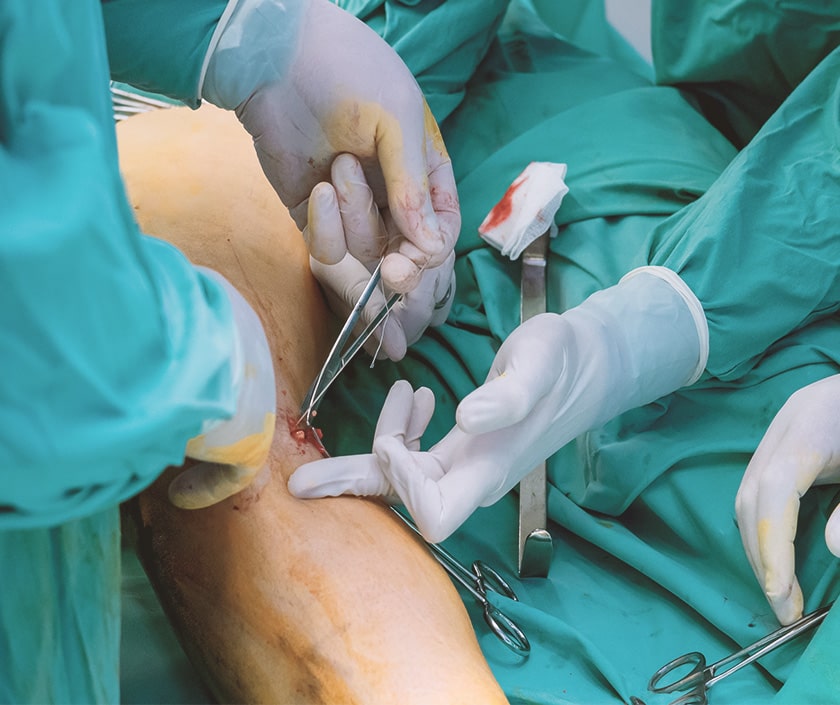Valve incompetence is a condition that occurs when the valves in the veins of the legs become damaged or weakened. These valves are responsible for preventing blood from flowing backwards in the veins and when they become incompetent they can no longer perform this function. As a result, blood can pool in the legs, leading to the development of varicose veins.
Varicose veins caused by valve incompetence typically appear as large, twisted, and often painful veins that can occur in the legs. They can be caused by a variety of factors such as genetics, pregnancy, and prolonged standing.
Treatment for valve incompetence varicose veins may include:
Endovenous ablation therapy: This is a minimally invasive procedure that uses heat or chemicals to destroy the damaged vein.
Sclerotherapy: A solution is injected into the affected vein using a very fine needle. The solution causes the vein to collapse and seal shut, preventing blood from flowing through it.
Surgery: such as vein stripping or endoscopic techniques to remove the damaged vein.
Compression Stockings: Compression stockings are worn to help improve circulation and reduce swelling.
It is important to note that treatment options may have potential risks such as bleeding, infection, and allergic reactions. It is important to consult with a qualified healthcare professional to determine the best treatment option for your individual needs and goals.
If you have any questions regarding our services, please contact us or call at +91 9879546805.
Hear from our patients
EXCELLENTTrustindex verifies that the original source of the review is Google. Had a vericose vein surgery for both legs.such a supportive doctors and team.Special Thanks to Dr.Aashutosh shah,sunnybhai and all the staff members for wondrful service.Trustindex verifies that the original source of the review is Google. Thank you sir your treatment is very goodTrustindex verifies that the original source of the review is Google. Very happy.. Very good service.. Very good staff..Trustindex verifies that the original source of the review is Google. Amazing staff, totaly supportive. Dr ashutosh sir & his Team totaly take care of the patients & does the procedure properly
Frequently Asked Questions
Having doubts and questions? These are few questions our customers normally ask us!
What is the purpose of hymenoplasty surgery?
Hymenoplasty is performed to reconstruct the hymen, which may be desired for cultural, religious, or personal reasons.
Can the hymen grow again?
The hymen does not regrow naturally; however, hymenoplasty surgically restores its presence.
Why is my hymen not opening?
Variations in hymen elasticity and opening are normal. If there are concerns, it’s best to consult a gynecologist.
Can a girl bleed after hymenoplasty?
Some bleeding is possible after hymenoplasty, similar to what might occur with the initial breaking of the hymen.
Can hymen bleed 2 times?
The hymen can only bleed once naturally. Post-hymenoplasty, it may bleed again upon rupture.
Does hymenoplasty restore virginity?
Hymenoplasty reconstructs the hymen physically but does not ‘restore’ virginity in a biological sense.
How many times can hymen bleed?
The hymen typically bleeds once upon tearing. After hymenoplasty, it may bleed again if ruptured.
Can a non-virgin bleed again?
Post-hymenoplasty, a woman may experience bleeding upon the hymen’s rupture, similar to the first time.
Is it necessary to bleed on the first night?
Bleeding is not a universal indicator of virginity or sexual experience. It varies among individuals.
How can a husband know that his wife is not a virgin?
Virginity cannot be determined physically. It’s a personal aspect that relies on trust and communication.
How long does hymen take to heal?
The healing time for hymenoplasty is typically around 6-8 weeks, but it can vary.
Do boys bleed on the first night?
Boys do not experience bleeding related to virginity.
Did your wife bleed on the first night?
This is a personal and private matter, and bleeding is not a definitive indicator of virginity.
Can you bleed if your partner is too big?
Bleeding can occur due to various reasons, including the size of the partner, but it’s not a certainty.
Contact Us
Ready to discuss? Fill out our contact form for a confidential consultation.








